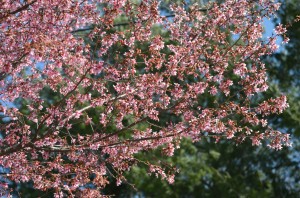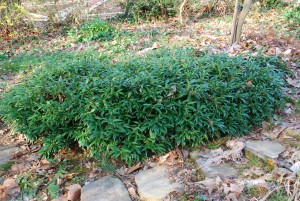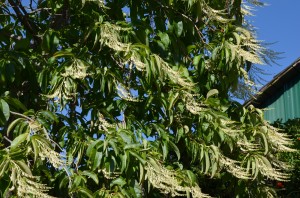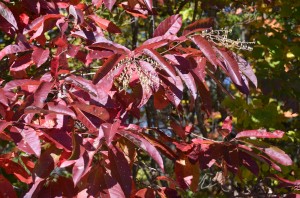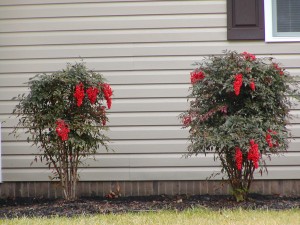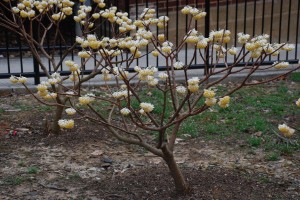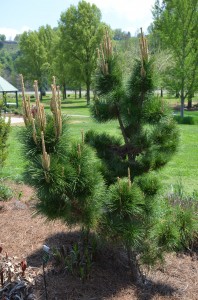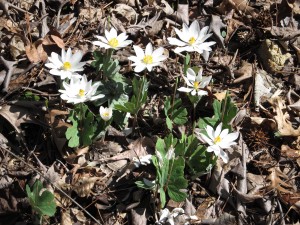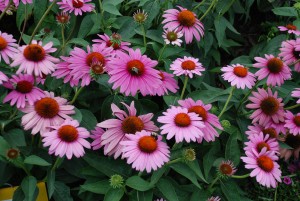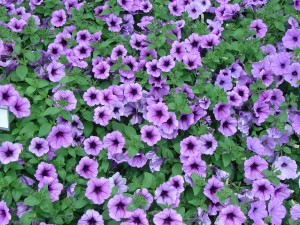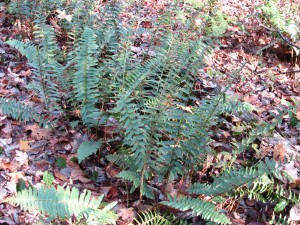‘Okame’ Cherry is a hybrid between Taiwan Cherry (Prunus campanulata) and Fuji Cherry (P. incisa) (USDA hardiness zones 6-8). Okame is the first ornamental cherry to bloom in the Southern Appalachian Region (USDA hardiness zones 6 and 7).
In the midst of a mild winter, Okame often starts blooming a few days after Valentine’s Day (February 14). Most years their lovely fuchsia pink flowers appear in mid-March and survive overnight temperatures in the upper twenties °F.
Following petal fall the dark red calyxes stay on for another 2-3 weeks. In early summer dark red ovoid drupe fruits ripen and are consumed by numerous species of birds.
Spring leaves start out bronze tinted and turn dark green and glossy through spring and summer. Foliage turn bronze-red before dropping in mid-autumn. Okame’s polished reddish-brown bark is marked with gray horizontal lines called “lenticels”.
Okame matures into a small tree, 20 to 30 feet in height and 10 to 15 feet wide. The tree’s upright branch form makes it an ideal candidate as a street tree. Don’t neglect summer watering its first two years after planting.
Okame is best planted in well-drained loamy soil and in open full sun. The tree tolerates light shade, but blooms heaviest in full sun. As a rule, ornamental cherries are susceptible to several diseases and pests, but Okame cherry is more resistant than most. In early summer inspect tree(s) for Japanese beetles, scale and spider mites and treat accordingly. Prune annually to remove dead, diseased or pest ridden branches, if any. Good air movement around tree also helps.
‘First Lady’ and ‘Dream Catcher’ are 2003 and 1999 U.S. National Arboretum releases respectively. Both are rated as improved hybrid forms of Okame cherry. Both cultivars typically grow 20-30 feet tall with upright branching. Branch tips are weep slightly, and are blanketed with single, dark rose-pink flowers in late March to early April.

